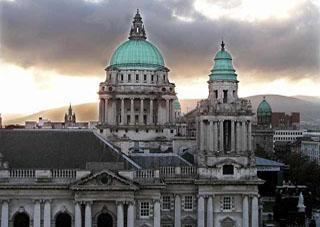 | ||
The architecture of Belfast comprises many styles of architecture ranging from Georgian through to state-of-the-art modern buildings like the Waterfront Hall and Titanic Belfast. The city's beautiful Victorian and Edwardian buildings are notable for their display of a large number of sculptures. Many of Belfast's Victorian landmarks, including the main Lanyon Building at Queens University in 1849, were designed by Sir Charles Lanyon.
Contents
Chronology and Styles
Belfast became a substantial settlement in the 17th century after being established as a town by Sir Arthur Chichester,. None of the buildings from Belfast’s first century as a market town on the river Farset survive today. The only significant structures in those early years from 1613 would have been a castle established by Sir Arthur Chichester, and the parish church at the foot of High Street, where a ‘chapel of the ford’ had been erected by 1306, and where St George’s church now stands.
21st century
In 2011 and 2012 Belfast saw the creation of two buildings described as "two of the most stunning new British buildings of the century", namely the Lyric Theatre (2011) by Irish architects O’Donnell and Tuomey and the Belfast MAC (2012) by local architectural practice Hackett Hall McKnight. In contrast, the new boat-shaped Titanic Museum (2012) was described by The Telegraph as "startlingly inane".
